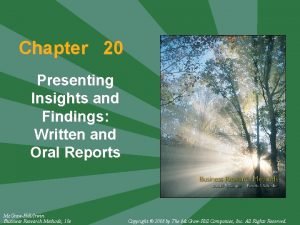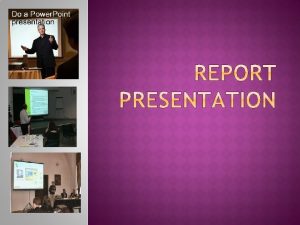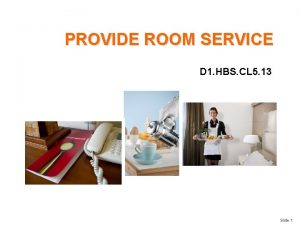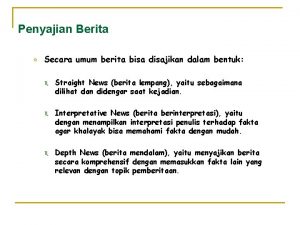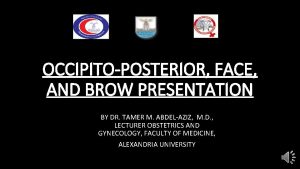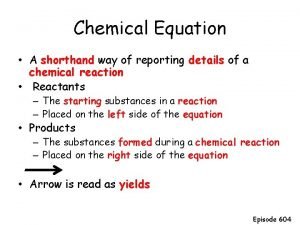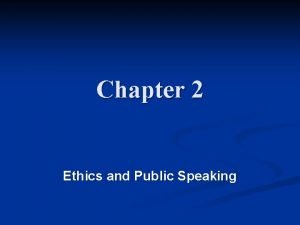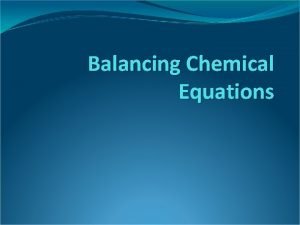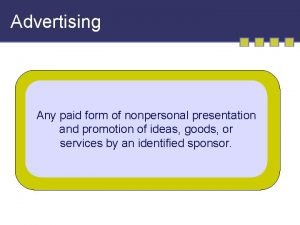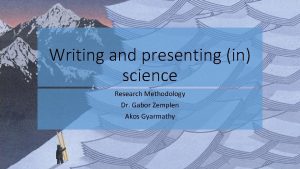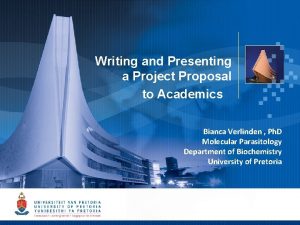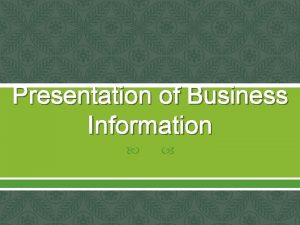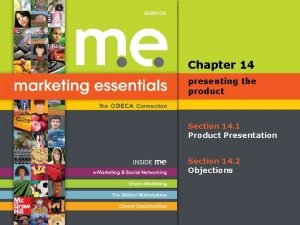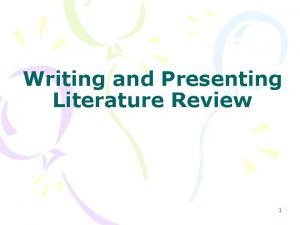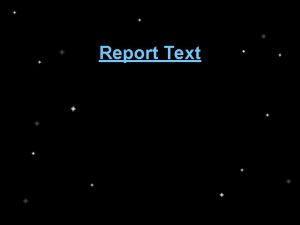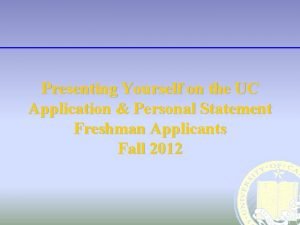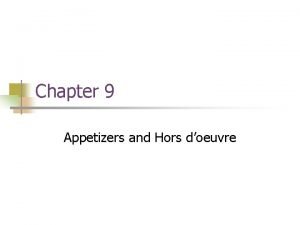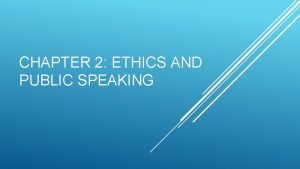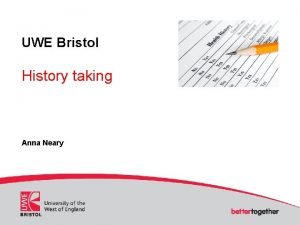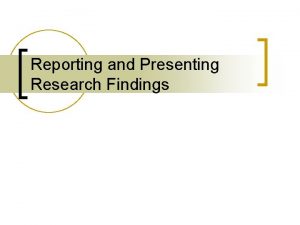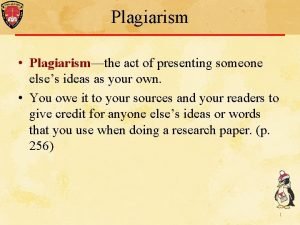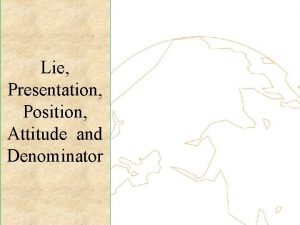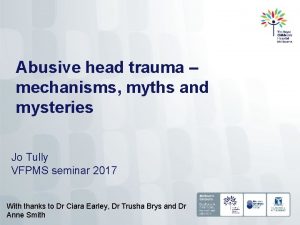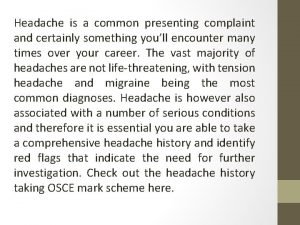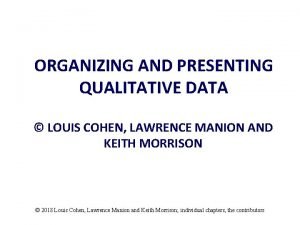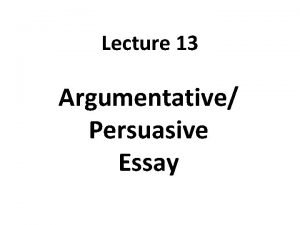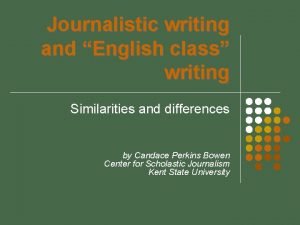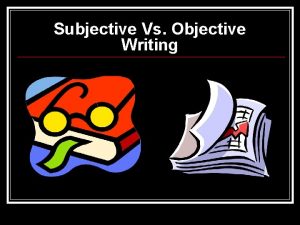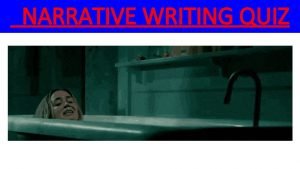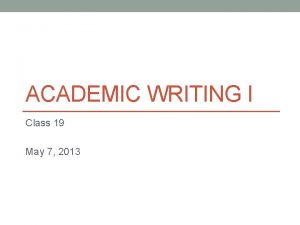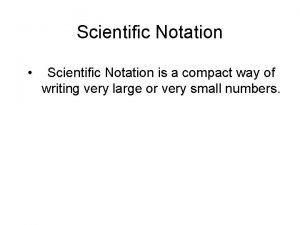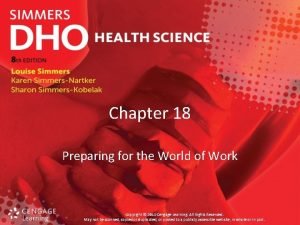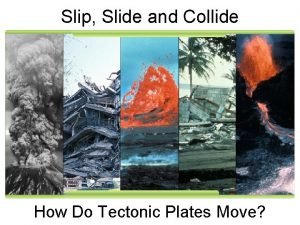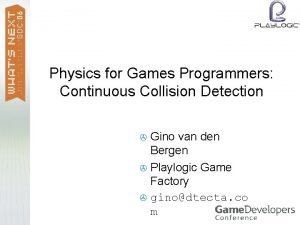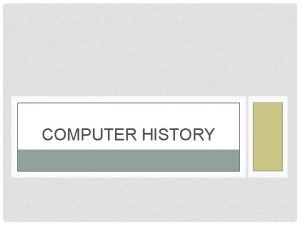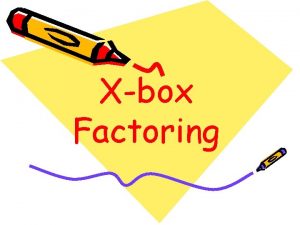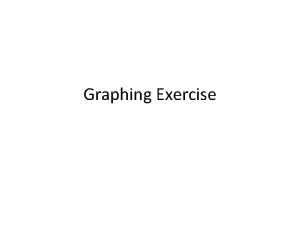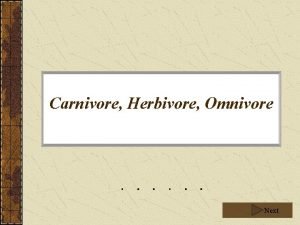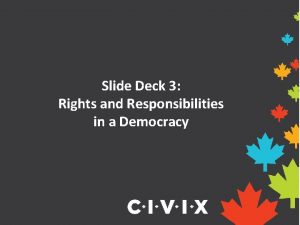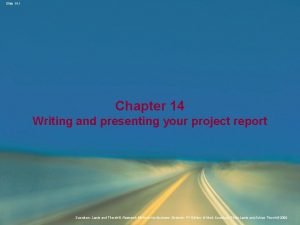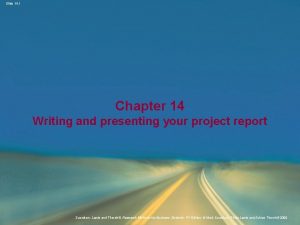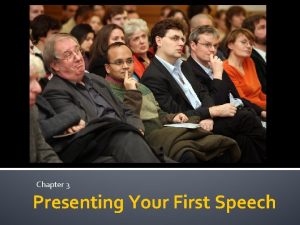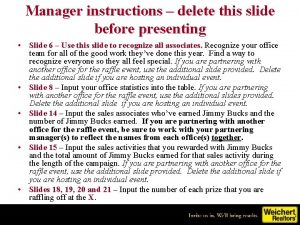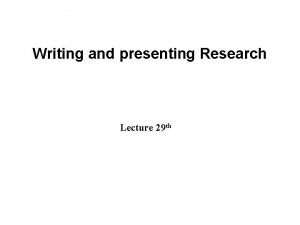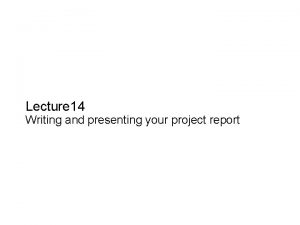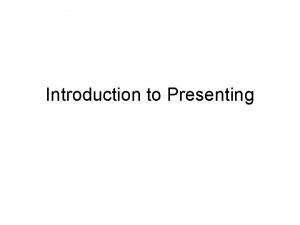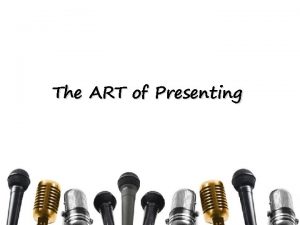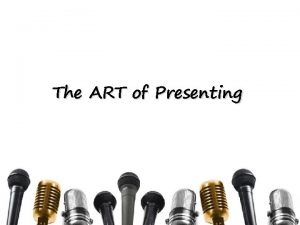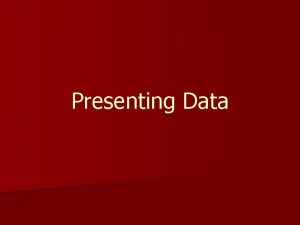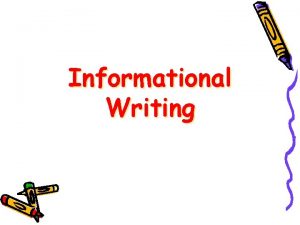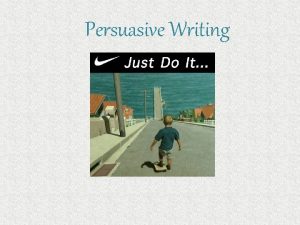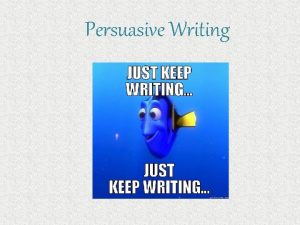Slide 14 1 Chapter 14 Writing and presenting
























































- Slides: 56

Slide 14. 1 + Chapter 14 Writing and presenting your project report Saunders, Lewis and Thornhill, Research Methods for Business Students , 5 th Edition, © Mark Saunders, Philip Lewis and Adrian Thornhill 2009

Slide 14. 2 + The main elements of the report n You will be doing projects on varied subjects n The structure for your report may vary slightly depending on your topic and discipline, for example, writing up a science experiment versus exploring a social phenomenon n There are elements of the report common to all projects after p u w o l l Fo the session Discuss with your teacher/supervisor the best structure for your individual project Saunders, Lewis and Thornhill, Research Methods for Business Students , 5 th Edition, © Mark Saunders, Philip Lewis and Adrian Thornhill 2009

Slide 14. 3 + Elements common to all reports n Introduction n Literature review n Methodology/strategy for investigation/technique n Findings of the investigation n Discussion n Conclusions Tell them what you are going to say Say it Tell them what you said These elements may guide your structure (you may wish to use them as headings) or you may prefer to combine some of these elements into different sections or chapters. Remember there may be additional elements or different names for these elements in your own discipline Saunders, Lewis and Thornhill, Research Methods for Business Students , 5 th Edition, © Mark Saunders, Philip Lewis and Adrian Thornhill 2009

Slide 14. 4 + Getting started with writing Practical hints n Create time for your writing n Write when your mind is fresh n Find a regular writing place n Set goals and achieve them n Use word processing n Generate a plan for the report n Finish each writing session on a high point n Get friends to read and comment on your work Saunders, Lewis and Thornhill, Research Methods for Business Students , 5 th Edition, © Mark Saunders, Philip Lewis and Adrian Thornhill 2009

Slide 14. 5 + Structuring your research report Suggested structure n Abstract n Introduction n Literature review n Method n Results n Discussion n Conclusions n References n Appendices Saunders, Lewis and Thornhill, Research Methods for Business Students , 5 th Edition, © Mark Saunders, Philip Lewis and Adrian Thornhill 2009

Slide 14. 6 + Writing for different audiences Key differences between an ‘Academic’ report and a ‘Consultancy’ or ‘Management’ report The academic report: n Tends to be longer n Will be marked and graded n Will contain contextual descriptions The consultancy report: n Has less focus on the development of theory n Contains recommendations relating to the organisation’s business Saunders, Lewis and Thornhill, Research Methods for Business Students , 5 th Edition, © Mark Saunders, Philip Lewis and Adrian Thornhill 2009

Slide 14. 7 + Report structure The abstract Four short paragraphs that answer the questions: 1. What were my research questions and why were they important? 2. How did I go about answering the research questions? 3. What did I find out in response to these questions? 4. What conclusions can be drawn? Adapted from Saunders et al. (2009) Saunders, Lewis and Thornhill, Research Methods for Business Students , 5 th Edition, © Mark Saunders, Philip Lewis and Adrian Thornhill 2009

Slide 14. 8 + Report structure Introduction - include n The research questions(s) and a clear statement of research objectives n Brief background a guide to the storyline Saunders, Lewis and Thornhill, Research Methods for Business Students , 5 th Edition, © Mark Saunders, Philip Lewis and Adrian Thornhill 2009

Slide 14. 9 + The Introduction This is where you will introduce the project to the reader. Think about: n Describing your topic. What is your aim? n Do you have a specific question to answer n Are you exploring a topic in detail n Are you creating something n Defining the topic e. g. - a geographical area, a period of time, a measurement, a material or a social phenomenon n There may be a number of interpretations of your topic, make it clear to the reader what you are studying n Why have you chosen this topic ? n is it important n subject of particular interest n relates to a hobby n or maybe you future career plan Saunders, Lewis and Thornhill, Research Methods for Business Students , 5 th Edition, © Mark Saunders, Philip Lewis and Adrian Thornhill 2009

Slide 14. 10 + Activity 1: Have a chat! Talking to others about your project and asking questions can be really helpful in clarifying your topic n Describe your topic/aim n Individually write one short topic sentence about your n Defining the topic n In a small group take turns read out your sentence and ask questions about each topic, start to define the area E. g. what do you mean by…. ? how would you measure. . . ? Saunders, Lewis and Thornhill, Research Methods for Business Students , 5 th Edition, © Mark Saunders, Philip Lewis and Adrian Thornhill 2009

Slide 14. 11 + Report structure Literature review - purpose n To set your study in the wider context n To show your study supplements existing work Saunders, Lewis and Thornhill, Research Methods for Business Students , 5 th Edition, © Mark Saunders, Philip Lewis and Adrian Thornhill 2009

Slide 14. 12 + What is a literature review? n Focuses on a specific topic and is organised around and related directly to your project n Compiles the research/information that has been published on the topic by recognised scholars and researchers • Provides background for the problem (research question) or puts the problem into historical perspective • Informs the reader about the current concepts and state of research on the topic and any controversies • Describes the pros and cons of particular studies and may suggest areas for further research • Organizes the literature into a narrative Saunders, Lewis and Thornhill, Research Methods for Business Students , 5 th Edition, © Mark Saunders, Philip Lewis and Adrian Thornhill 2009

Slide 14. 13 + It also demonstrates your skills n Information seeking: the ability to search the literature efficiently, using manual or computerized methods, to identify a relevant set of articles (and books) n Organisation n Appraisal: n Writing: n It to identify good evidence/arguments structure and presentation is a creative process These skills are part of the assessment! Saunders, Lewis and Thornhill, Research Methods for Business Students , 5 th Edition, © Mark Saunders, Philip Lewis and Adrian Thornhill 2009

Slide 14. 14 + Structuring the literature review Chronologically (historical) By key researchers How can you order your literature review? Thematically Methodologically Saunders, Lewis and Thornhill, Research Methods for Business Students , 5 th Edition, © Mark Saunders, Philip Lewis and Adrian Thornhill 2009

Slide 14. 15 + Developing a clear line of argument On its own, evidence cannot contribute to academic debate. The interpretation and presentation of that evidence within an argument allows the evidence to make a contribution. Make sure that: n There is always a clear link between your own arguments and the evidence uncovered in your reading n You include a short summary at the end of each section n You acknowledge opinions which do not agree with your argument. If you ignore opposing viewpoints, your argument will in fact be weaker Saunders, Lewis and Thornhill, Research Methods for Business Students , 5 th Edition, © Mark Saunders, Philip Lewis and Adrian Thornhill 2009

Slide 14. 16 + Going beyond description You not only need to show you can extract, interpret and summarise information but that you can go beyond this and show connections between ideas, information, sources etc. Compare and contrast different authors' views on an issue • group authors who draw similar conclusions • note areas in which authors are in disagreement • highlight exemplary studies • highlight gaps in research Show your work n relates to previous studies/developments n relates to the literature in general Saunders, Lewis and Thornhill, Research Methods for Business Students , 5 th Edition, © Mark Saunders, Philip Lewis and Adrian Thornhill 2009

Slide 14. 17 + When to stop n It is important to keep control of the reading process, and to keep your research focus in mind. n Always bear in mind your research question n Why am I including this? n It might be interesting but is it relevant? n Planning focus. your review is the best way of keeping the n Decisions need to be made about where to focus your reading, and where you can refer briefly to an area but explain why you will not be going into it in more detail. Saunders, Lewis and Thornhill, Research Methods for Business Students , 5 th Edition, © Mark Saunders, Philip Lewis and Adrian Thornhill 2009

Slide 14. 18 + Report structure Methodology n. The reader needs to know how you carried out your investigation/created something. n. You may be discussing a physical process – an experiment or a survey or a creative process – creative writing or making a film. n. It is helpful to break it down into steps and explain how and why decisions were made n. Use your reflective diary as you are going along to document this Saunders, Lewis and Thornhill, Research Methods for Business Students , 5 th Edition, © Mark Saunders, Philip Lewis and Adrian Thornhill 2009

Slide 14. 19 + Report structure Methodology Participants n How many? n How were they selected? n What were their characteristics? n How were refusals/non-returns handled? Materials n What tests/scales/interview or observation schedules/questionnaires were used? n How were purpose-made instruments developed? n How were the resulting data analyzed? Saunders, Lewis and Thornhill, Research Methods for Business Students , 5 th Edition, © Mark Saunders, Philip Lewis and Adrian Thornhill 2009

Slide 14. 20 + Report structure Methodology Procedures n What were the characteristics of the interviewers and observers, and how were they trained? n How valid and reliable do you think the procedures were? n What instructions were given to participants? n How many interviews/observations/questionnaires were there; how long did they last; where did they take place? n When was the research carried out? Saunders, Lewis and Thornhill, Research Methods for Business Students , 5 th Edition, © Mark Saunders, Philip Lewis and Adrian Thornhill 2009

Slide 14. 21 + Report structure Results chapter(s) - purpose n To report the facts your research discovered n To support the facts with quotes from participants Discussion chapter- purpose n To interpret results and relate the findings to the original research goals and objectives n To indicate implications of the research Saunders, Lewis and Thornhill, Research Methods for Business Students , 5 th Edition, © Mark Saunders, Philip Lewis and Adrian Thornhill 2009

Slide 14. 22 + Findings and critical discussion n How will you present your findings, results or ideas? n Charts and diagrams n Map n Film or painting n A play or creative writing n Quotes from an interview n What do they mean ? n How have you interpreted your findings? This part of the project/dissertation is the really fundamental bit where you must spell out clearly and systematically an argument that will lead to a conclusion. Saunders, Lewis and Thornhill, Research Methods for Business Students , 5 th Edition, © Mark Saunders, Philip Lewis and Adrian Thornhill 2009

Slide 14. 23 + Reporting The Findings n Frame a percentages and proportions in absolute numerical terms “Sixty percent (n= 18) of the sample either strongly agreed or agreed with the statement that the holiday season tends to cause a great deal of anxiety. ” Saunders, Lewis and Thornhill, Research Methods for Business Students , 5 th Edition, © Mark Saunders, Philip Lewis and Adrian Thornhill 2009

Slide 14. 24 The Use of Data In Reports n Tables should support discussion points “Third quarter performance peaked dramatically in the East relative to the West and North. Overall brand performance remained stagnant from region to region in the first, second, and fourth quarters. ” Saunders, Lewis and Thornhill, Research Methods for Business Students , 5 th Edition, © Mark Saunders, Philip Lewis and Adrian Thornhill 2009

Slide 14. 25 + The Use of Data In Reports n Bar charts are appropriate for category comparisons n Pie charts visually represent portions of the whole Saunders, Lewis and Thornhill, Research Methods for Business Students , 5 th Edition, © Mark Saunders, Philip Lewis and Adrian Thornhill 2009

Slide 14. 26 + Report structure Using a matrix in the planning of the content for the results and conclusions chapters Saunders et al. (2009) Figure 14. 1 Using a matrix in the planning of the content for the results and conclusions chapters Saunders, Lewis and Thornhill, Research Methods for Business Students , 5 th Edition, © Mark Saunders, Philip Lewis and Adrian Thornhill 2009

Slide 14. 27 + Discussion & Interpretation n Revisit the Research Problem Statement n n Organize discussion around concepts of interest, research concepts Don’t just spout numbers; tell the story behind the data n Highlight, topline, and synthesize information Saunders, Lewis and Thornhill, Research Methods for Business Students , 5 th Edition, © Mark Saunders, Philip Lewis and Adrian Thornhill 2009

Slide 14. 28 + Discussion & Interpretation n Leave the reader with food for thought n What does the quantitative data suggest? n Based on complete evidence in the data gathered, what conclusions can be drawn? n What recommendations, suggestions can be made to address the marketing problem? Saunders, Lewis and Thornhill, Research Methods for Business Students , 5 th Edition, © Mark Saunders, Philip Lewis and Adrian Thornhill 2009

Slide 14. 29 + Report structure Conclusion chapter – purpose n To answer the research question(s) n To meet the research objectives n To consider the findings n To present any contributions to the topic displayed in the literature n To reflect on any implications for future research Saunders, Lewis and Thornhill, Research Methods for Business Students , 5 th Edition, © Mark Saunders, Philip Lewis and Adrian Thornhill 2009

Slide 14. 30 + Conclusions n Real conclusions, not just a summary/repetition of the findings n The extent to which you achieved what you set out to achieve n Possible weaknesses/limitations of the methodology and interpretations n Recommendations for the future n Reflections on doing the project – use diary/activity log to help you here n how well you performed at different stages of the project n what you would do differently next time and why n what you have learned about conducting research and writing a dissertation Saunders, Lewis and Thornhill, Research Methods for Business Students , 5 th Edition, © Mark Saunders, Philip Lewis and Adrian Thornhill 2009

Slide 14. 31 + Report structure References n Use a convention that is accepted by your university (e. g. Harvard, APA) n Cite all sources referred to in the text n Check all citations to prevent plagiarism Appendices n Include only essential supporting material n Include copies of interview schedules n Keep appendices to a minimum Saunders, Lewis and Thornhill, Research Methods for Business Students , 5 th Edition, © Mark Saunders, Philip Lewis and Adrian Thornhill 2009

Slide 14. 32 + Organising the report content (2) Main points to consider n Choosing the title n Telling a clear story n Helping the reader by. Dividing your work Previewing and summarising chapters Using suitables and graphics Writing in a suitable style Saunders, Lewis and Thornhill, Research Methods for Business Students , 5 th Edition, © Mark Saunders, Philip Lewis and Adrian Thornhill 2009

Slide 14. 33 + Writing style Key points: n Clarity and simplicity – avoid jargon n Checking grammar and spelling n Preserving n Regularly anonymity revising each draft Saunders, Lewis and Thornhill, Research Methods for Business Students , 5 th Edition, © Mark Saunders, Philip Lewis and Adrian Thornhill 2009

Slide 14. 34 + Finishing touches n The Abstract (if required) – should be written when you have completed the dissertation n Presentation is very important, it does make a difference if your headings are consistent, everything is labelled properly and all the pages are there! Try not to print out at the last minute n Leave time to read through you work. Check for typos, formatting and make sure all of your references are correct in the text and in the reference list n Ask someone reliable to proof read your dissertation Saunders, Lewis and Thornhill, Research Methods for Business Students , 5 th Edition, © Mark Saunders, Philip Lewis and Adrian Thornhill 2009

+ The Oral Presentation

Slide 14. 36 + Questions You Need To Ask n To whom are you presenting? n How much do they know about the topic? n How educated and/or sophisticated are they? n How large is the audience? Saunders, Lewis and Thornhill, Research Methods for Business Students , 5 th Edition, © Mark Saunders, Philip Lewis and Adrian Thornhill 2009

Slide 14. 37 + More Questions To Ask n n n How long is the presentation? What is the purpose of the presentation? n Inform? n Persuade? n Entertain? What do you want to convey? Saunders, Lewis and Thornhill, Research Methods for Business Students , 5 th Edition, © Mark Saunders, Philip Lewis and Adrian Thornhill 2009

Slide 14. 38 Know Your Subject n Have something substance to say. of n Learn more than you will say. n The more you know, the more enthusiastic you will be. 38 Saunders, Lewis and Thornhill, Research Methods for Business Students , 5 th Edition, © Mark Saunders, Philip Lewis and Adrian Thornhill 2009

Slide 14. 39 Fear Is Good n Fear of failing n Fear of audience 39 Saunders, Lewis and Thornhill, Research Methods for Business Students , 5 th Edition, © Mark Saunders, Philip Lewis and Adrian Thornhill 2009

Slide 14. 40 40 Audience Fears Allayed n The audience doesn’t know what you intended to say or to do. n You know more about the topic than anyone in the audience. Saunders, Lewis and Thornhill, Research Methods for Business Students , 5 th Edition, © Mark Saunders, Philip Lewis and Adrian Thornhill 2009

Slide 14. 41 41 Elements of a Good Presentation n Clear purpose or objective n Sufficient, but not too much, information n Organized n Meets n For needs of audience the ear to hear as well as the eye to see n Stories and examples Saunders, Lewis and Thornhill, Research Methods for Business Students , 5 th Edition, © Mark Saunders, Philip Lewis and Adrian Thornhill 2009

Slide 14. 42 + 42 Outlining Your Presentation n. Methods of organization n chronological or sequential n three points n problem-cause-solution n n ways to … n Stories Saunders, Lewis and Thornhill, Research Methods for Business Students , 5 th Edition, © Mark Saunders, Philip Lewis and Adrian Thornhill 2009

Slide 14. 43 + 43 Opening n Crucial n Sets the tone n Need to grab audience Saunders, Lewis and Thornhill, Research Methods for Business Students , 5 th Edition, © Mark Saunders, Philip Lewis and Adrian Thornhill 2009

Slide 14. 44 + 44 Types of Openings n Preview n Ask a question n Ask a rhetorical question n Pose a hypothetical situation n Describe n Make something new or dramatic a startling statement Saunders, Lewis and Thornhill, Research Methods for Business Students , 5 th Edition, © Mark Saunders, Philip Lewis and Adrian Thornhill 2009

Slide 14. 45 Delivery of a Good Presentation n Be enthusiastic n Use body language n Talk to the audience n Dress appropriately 45 Saunders, Lewis and Thornhill, Research Methods for Business Students , 5 th Edition, © Mark Saunders, Philip Lewis and Adrian Thornhill 2009

Slide 14. 46 + 46 Closing the Presentation n Too important to wing it n. A speech is like a love affair; any fool can start one but to end it requires considerable skill. - Lord Mancraft (1914 -1987) n Last chance to tell what to know and do n Direct, brief, and strong Saunders, Lewis and Thornhill, Research Methods for Business Students , 5 th Edition, © Mark Saunders, Philip Lewis and Adrian Thornhill 2009

Slide 14. 47 Closing Styles 47 n Summarize n Call to action n Anecdote or story n Rhetorical question Saunders, Lewis and Thornhill, Research Methods for Business Students , 5 th Edition, © Mark Saunders, Philip Lewis and Adrian Thornhill 2009

Slide 14. 48 48 Summary Elements of a good presentation n Be clear about its purpose. n Prepare. n Have an attention-getting opening. n Make the content organized and interesting. n Be enthusiastic. n Talk to the audience. n Have a memorable closing. Saunders, Lewis and Thornhill, Research Methods for Business Students , 5 th Edition, © Mark Saunders, Philip Lewis and Adrian Thornhill 2009

Slide 14. 49 + Tips for the Presentation n All members must attend actively participate n Use team members‘strengths where necessary n Support your team members n Support other teams Saunders, Lewis and Thornhill, Research Methods for Business Students , 5 th Edition, © Mark Saunders, Philip Lewis and Adrian Thornhill 2009

Slide 14. 50 + Presentation Do’s n Do introduce yourself and your team members and your project focus early in the presentation n Do establish an outline that will be used to present your research n Do highlight, summarize the process and findings from research n Do rehearse before the presentation Saunders, Lewis and Thornhill, Research Methods for Business Students , 5 th Edition, © Mark Saunders, Philip Lewis and Adrian Thornhill 2009

Slide 14. 51 + The Biggest Do n Be professional, but DO HAVE FUN Saunders, Lewis and Thornhill, Research Methods for Business Students , 5 th Edition, © Mark Saunders, Philip Lewis and Adrian Thornhill 2009

Slide 14. 52 + Presentation Don’ts n Don’t hide behind an avalanche slides/overhead transparencies of n Don’t be a distraction to yourself or to the speaker (Be attentive) n Don’t stop the presentation because the “script, ” or the technology, is not working n n It’s not about the show, its about the information No one knows the data better than you and your team Saunders, Lewis and Thornhill, Research Methods for Business Students , 5 th Edition, © Mark Saunders, Philip Lewis and Adrian Thornhill 2009

Slide 14. 53 + Oral presentation Three key stages: n Planning n Use and preparation of visual aids n Presenting Saunders, Lewis and Thornhill, Research Methods for Business Students , 5 th Edition, © Mark Saunders, Philip Lewis and Adrian Thornhill 2009

Slide 14. 54 + Summary: Chapter 14 n Writing is a creative process and a powerful way to clarifying your thinking n. A project report needs a clear structure that helps to develop the storyline n All the information should be readily accessible to the reader Saunders, Lewis and Thornhill, Research Methods for Business Students , 5 th Edition, © Mark Saunders, Philip Lewis and Adrian Thornhill 2009

Slide 14. 55 + Summary: Chapter 14 n Use a clear writing style free and check for spelling and grammatical errors n Be prepared to rewrite the first draft several times n Remember to check the assessment criteria Saunders, Lewis and Thornhill, Research Methods for Business Students , 5 th Edition, © Mark Saunders, Philip Lewis and Adrian Thornhill 2009

Slide 14. 56 + Summary: Chapter 14 n Failing to prepare for your presentation is preparing to fail n Visual aids help the audience understand your presentation Remember to – n Tell them what you're going to say n Say it n Tell them what you said Saunders, Lewis and Thornhill, Research Methods for Business Students , 5 th Edition, © Mark Saunders, Philip Lewis and Adrian Thornhill 2009
 What is heel and toe polka
What is heel and toe polka Types of interior display
Types of interior display Presenting insights and findings
Presenting insights and findings Good afternoon ladies and gentlemen
Good afternoon ladies and gentlemen How to factor a binomial
How to factor a binomial Set up trays and trolleys
Set up trays and trolleys Presenting organization
Presenting organization Different ways of presenting information
Different ways of presenting information Berdasarkan teknik penyajian
Berdasarkan teknik penyajian Brow presentation
Brow presentation A chemist shorthand way of representing chemical reaction
A chemist shorthand way of representing chemical reaction Presenting another person's language or ideas as one's own.
Presenting another person's language or ideas as one's own. A chemist shorthand way of representing chemical reaction.
A chemist shorthand way of representing chemical reaction. Nonpersonal presentation
Nonpersonal presentation Ocar structure
Ocar structure Presenting a research proposal
Presenting a research proposal Slidetodoc.com
Slidetodoc.com Presenting problem
Presenting problem Presenting the product
Presenting the product Presenting complaints of hypertension
Presenting complaints of hypertension Structure of review writing
Structure of review writing Definisi report text
Definisi report text Death of cleopatra edmonia lewis
Death of cleopatra edmonia lewis Additional comments uc application
Additional comments uc application Presenting qualitative data
Presenting qualitative data What are the principles in presenting appetizer?
What are the principles in presenting appetizer? Stealing a speech entirely from a single source
Stealing a speech entirely from a single source History taking format
History taking format Presenting research findings
Presenting research findings Presenting someone else's words or ideas as your own is
Presenting someone else's words or ideas as your own is Denominator presentation
Denominator presentation Presenting complaint
Presenting complaint Name of presenting organization
Name of presenting organization Plating poultry dishes
Plating poultry dishes Presenting complaint
Presenting complaint Organizing qualitative data
Organizing qualitative data Type of essay
Type of essay Formal and informal tone
Formal and informal tone Academic writing and technical writing
Academic writing and technical writing Similarities of literature and journalism
Similarities of literature and journalism Example of objective writing
Example of objective writing Should i write in first or third person quiz
Should i write in first or third person quiz Informal writing vs formal writing
Informal writing vs formal writing Argumentative writing vs persuasive writing
Argumentative writing vs persuasive writing Business writing vs academic writing
Business writing vs academic writing What is active and passive voice
What is active and passive voice 140 000 000 in scientific notation
140 000 000 in scientific notation Chapter 18:1 preparing for the world of work
Chapter 18:1 preparing for the world of work Slip slide and collide
Slip slide and collide Collide and slide algorithm
Collide and slide algorithm Abacus computer history
Abacus computer history Xbox method factoring
Xbox method factoring A train pulls into a station and lets off its passengers
A train pulls into a station and lets off its passengers Roles and responsibilities slide
Roles and responsibilities slide Omnivore examples
Omnivore examples Translation slide
Translation slide Roles and responsibilities slide
Roles and responsibilities slide


